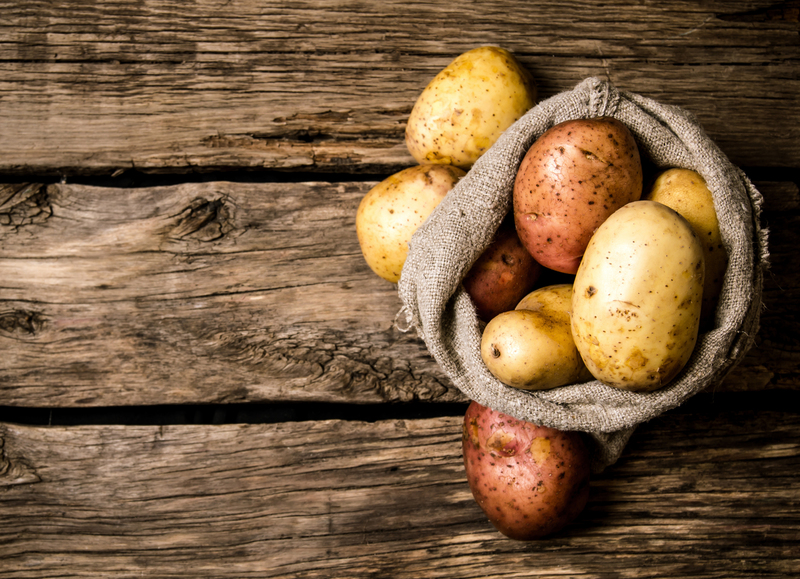Insulating Your Garden Plants for The Winter Freeze
Posted on 01/09/2025
Insulating Your Garden Plants for The Winter Freeze: A Comprehensive Guide
As winter approaches, gardeners everywhere begin to worry about the fate of their beloved plants. Freezing temperatures, biting winds, and fluctuating weather can take a toll on even the hardiest species. Insulating your garden plants for the winter freeze is a critical step in garden care, ensuring your green investments survive and thrive come spring.
Why Winter Plant Protection Is Essential
Winter freezes can cause severe damage to exposed plants by:
- Causing cellular damage in tender stems and leaves
- Encouraging frost heave, pushing roots out of the soil
- Dehydrating plants with cold, drying winds
- Disrupting a plant's natural dormancy cycle
- Killing sensitive species or causing stunted growth in perennials
By insulating garden plants for winter, you can minimize these risks, improve plant survival rates, and enjoy a more beautiful and productive garden in the growing season.

Understanding Plant Hardiness
Before you begin insulating, it's important to assess the hardiness of your plants. Hardiness refers to a plant's natural ability to withstand cold. Check your regional USDA Hardiness Zone and categorize your plants:
- Annuals: Usually do not survive freezing; treat as disposable unless overwintered indoors.
- Perennials: May require mulching or extra protection, especially if planted near their hardiness limit.
- Evergreens: At risk from wind desiccation and sunscald even if roots are hardy.
- Tender and Mediterranean Plants: Need serious winter insulation (or relocation indoors).
When to Start Insulating Plants for Winter
The ideal timing depends on your climate, but as a rule of thumb, begin preparing protective measures in late fall, just before the first hard frost hits. Insulating too early can keep plants actively growing when they should be dormant, while waiting too long risks damage:
- Monitor forecasts for sudden cold snaps in your area.
- Finish protection before overnight lows consistently dip below freezing.
Top Methods for Insulating Garden Plants Against Winter Freezes
1. Mulching: Nature's Blanket
Mulch is the simplest and most effective way to insulate your garden plants for winter. Mulch acts as a thermal buffer that:
- Moderates soil temperatures
- Prevents rapid freezing and thawing
- Reduces moisture loss
- Minimizes weed growth in dormant garden beds
Best Mulching Materials:
- Straw: Lightweight and insulating, easy to remove in spring.
- Chopped leaves: Readily available and eco-friendly.
- Pine needles: Great for acid-loving plants and allow ventilation.
- Wood chips or bark: Lasts longer but may harbor pests; avoid piling directly against stem.
How to Apply: After the ground has frozen lightly, spread 2-4 inches of your chosen mulch around (not on top of) plant crowns, ensuring root zones are well covered.
2. Row Covers, Blankets, and Frost Cloths
For seasonal insulation of sensitive plants, use fabric covers such as:
- Horticultural fleece/frost cloth: Lightweight, allows light and moisture through.
- Burlap: Breathable, protects against wind and sunscald.
- Old sheets, towels, or blankets: Suitable in a pinch for unexpected frosts.
These barriers trap warm air close to the plant and shield it from icy winds. Be sure to secure covers against wind using stakes or stones and remove heavy covers when temperatures rise to prevent overheating.
3. Cold Frames and Cloches
Use mini-greenhouses for insulation, especially for tender seedlings or winter vegetables.
- Cold frames: Wooden or plastic boxes with a clear lid, ideal for rows of plants.
- Cloches: Individually cover small plants with glass domes, plastic bottles, or wire frames wrapped in plastic.
- Hoop houses: Use PVC or metal hoops covered with polythene sheeting for larger garden beds.
These structures are highly effective for insulating plants during winter freezes and can be ventilated during mild, sunny days.
4. Wrapping Trees and Shrubs
Young trees and tender shrubs are vulnerable to sunscald, frost cracks, and drying wind. Wrap sensitive specimens with:
- Burlap or tree wrap from the base up to the lower branches
- Corrugated tree guards to prevent rodent or frost damage on trunks
Tip: Remove wraps in early spring to prevent moisture buildup and pest invasions.
5. Anti-Desiccant Sprays
Winter winds can desiccate evergreens, causing browning and dieback. Anti-desiccant sprays are waxy coatings that reduce moisture loss through leaves and needles. Reapply every month or as needed throughout the cold season.
How to Insulate Potted and Container Plants for Winter
Container plants are at higher risk during a winter freeze because their roots are exposed. To keep them safe:
- Move pots against a protected wall or into an unheated garage or shed.
- Cluster containers together for added protection.
- Wrap pots in bubble wrap, burlap, or insulation foam.
- Mulch the surface with straw or leaves.
- Elevate pots on bricks to prevent contact with frozen ground.
Clay pots are especially prone to cracking if left exposed. Either bring them inside or wrap thoroughly.
Expert Tips for Successful Plant Insulation
- Water thoroughly before the ground freezes. Moist soil holds warmth better than dry soil and helps prevent root dehydration.
- Don't over-fertilize late in the season. Tender new growth is especially susceptible to winter injury.
- Prune only as recommended for your plant variety. Fall pruning may stimulate unwanted growth.
- Avoid using plastic as a direct cover - it traps moisture and can cause rot or fungal disease.
- Label or map tender perennials so you know exactly where to provide the most insulation in autumn.
Common Mistakes to Avoid
- Insulating too early: Wait until plants have entered dormancy, as premature insulation can cause disease or pest buildup.
- Piling mulch directly on plant crowns: This can cause rot or promote vole/mouse damage; mulch around, not on top.
- Leaving covers on too long: Remove during warm spells to prevent overheating and fungal growth.
- Neglecting wind protection: Freezing wind is often just as damaging as low temperature; use screens or burlap windbreaks for exposed beds.
Insulate Different Garden Plants According to Their Needs
Winter Insulation for Perennials
Hardy perennials may only need a moderate mulch layer. Especially vulnerable perennials (like tender salvias or dahlias) will benefit from both mulch and fabric row covers.
Protecting Roses
Roses are susceptible to stem dieback and crown damage. Mound 8-10 inches of compost or mulch around the base, and consider a rose cone or burlap wrap in very cold climates.
Saving Bulbs and Tubers
Dahlias, canna lilies, and other summer bulbs should be dug up and stored indoors in a cool, dry, frost-free location. Hardy spring bulbs can stay in the ground but benefit from a mulch layer.
Gardening with Evergreens
Water well before freeze-up, mulch the root zone, and use burlap screens to protect from wind and sunscald. Anti-desiccant sprays may be especially helpful for broadleaf evergreens like rhododendrons.
Eco-friendly and Innovative Insulating Solutions
The world of winter plant insulation is always evolving. Sustainable and innovative options now include:
- Recycled materials: Use old carpeting as barriers, shredded paper for mulch, or cardboard collared around stems.
- Live insulation: Use groundcovers or low hedges to provide natural shelter.
- Solar insulation: Position large rocks near vulnerable plants to absorb and release heat overnight.
- Smart covers: Automated frost sensors that trigger heated row covers or fans.
Choosing organic, locally sourced mulches also supports biodiversity and soil health while protecting your plants.

Frequently Asked Questions: Insulating Garden Plants for Winter
How thick should mulch be to protect my garden?
2-4 inches of mulch is typically enough for most plants. For very tender or newly-planted perennials, up to 6 inches may be used.
Can I use plastic for winter insulation?
It's best to avoid direct contact of plastic with plant foliage. If using plastic sheeting, ensure there's an air gap and allow for ventilation during sunny days to prevent overheating.
Should I remove all insulation in the spring?
Yes, once freezing danger has passed, remove heavy mulches and covers to allow plants access to sun and air.
Conclusion: Embrace Winter Plant Protection as Part of Your Year-Round Gardening
Insulating your garden plants for the winter freeze is not just about survival--it's about ensuring that your plants rebound with vigor, beauty, and productivity when warm weather returns. With the right techniques, you can protect investments both old and new, learn about the unique needs of your garden, and enjoy gardening success through all four seasons.
For more expert gardening tips and updated strategies for winter plant insulation, bookmark this guide and let your garden flourish year after year--no matter how cold it gets outside.

